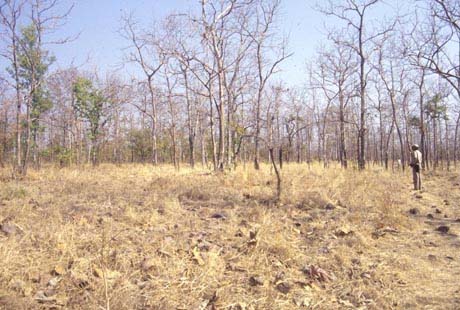Key Outcomes
/topics/forests
Guest Post: Nitin Rai, Ashoka Trust for Research in Ecology and the Environment (ATREE)
Drawing upon his experience working with the Soligas who live within the Biligiri Rangaswamy Temple Wildlife Sanctuary, Nitin Rai talks about the ‘wilderness’ myth and explores the origins and impacts of the belief that people and animals cannot co-exist.

 These guidelines by the National Disaster Management Authority (NDMA) on management of landslides and snow avalanches aim to reduce the enormous destructive potential of landslides and minimize the consequential losses by institutionalizing the landslide hazard mitigation efforts.
These guidelines by the National Disaster Management Authority (NDMA) on management of landslides and snow avalanches aim to reduce the enormous destructive potential of landslides and minimize the consequential losses by institutionalizing the landslide hazard mitigation efforts.
It is necessary that the hazard must first be recognized, the risk analyzed and an appropriate strategy developed at the national level to mitigate its impact. To achieve this objective, the NDMA initiated a series of consultations for drafting the national guidelines on landslides and snow avalanches to guide the activities envisaged for mitigating the risk emanating from landslides at all levels. The guidelines include regulatory and non-regulatory frameworks with defined time schedules for all activities. It is envisioned that all national and state disaster management plans and policies for landslides will be formulated and implemented keeping in view the overall framework of the guidelines.
Organization: Western Ghats Hornbill Foundation (WGHF)
Venue: Sahithya Academic Hall, Thrissur

Description:
The Western Ghats Hornbill Foundation (WGHF) is organizing a two day workshop on right of the forest, river and tribe during 25th and 26th October 2011 at Sahithya Academic Hall, Thrissur. This is being organized as part of the inaugural session of our one year long campaign.

Bombay Natural History Society (BNHS) – a membership-driven organization - has been promoting the cause of a natural India for the past 127 years since 1883. It was started by 8 Mumbai citizens, of which two were Indians. The Society's guiding principle has always been that conservation must be based on scientific research - a tradition exemplified by its former president, late Dr Sálim Ali. Designated as a Scientific and Industrial Research Organization (SIRO) by Department of Science & Technology, Government of India.
After knowing that the encroachers set fire in the protected forest area, nearly 100 acres and cultivating cash crops in Sirumalai hills, iGREEN and Equal Justice jointly organised fact finding visit with lawyers and media persons and gone to sirumalai Hills. We were shocked when we saw fired forest land.
The Ministry of Environment and Forests (MoEF) has based on consultation with stakeholders revised the procedure to be followed for consideration of projects that involve forestland for grant of environment clearance under EIA Notification, 2006. The requirement of information/data/documents for such projects is also outlined in the office memorandum.

Image courtesy: Ministry of Environment and Forests
The Ministry of Environment and Forests (MoEF) had earlier issued an office memorandum vide no. J-11015/200/2008-IA.II(M) dated 31.3.2011 prescribing the procedure to be followed for consideration of projects for environmental clearance, which involve forestland.
Main hazards that the state is prone to consist of earthquakes, landslides, flash floods, snow storms and avalanches, droughts, dam failures, fires – domestic and wild, accidents – road, rail, air, stampedes, boat capsizing, biological, industrial and hazardous chemicals etc.
Goa, going, gone – A film by Carmen Miranda on Goa’s mining
As you may have assumed from its title, “Goa, going gone” is about Goa - - or more specifically, it’s about the environmental impact that is likely to result from the rampant mining that is underway in the state. Goa is being dug out of existence and gigantic craters expand across a 95 km long mining belt.
More information on the project can be seen on IUCN's website.
Key Outcomes

The project on “Mainstreaming coastal and marine biodiversity conservation into production sectors in the East Godavari river estuarine ecosystem”, Andhra Pradesh with a special focus on the Coringa wildlife sanctuary is being implemented by the Government of India and Government of Andhra Pradesh, with United Nations Development Programme as the lead agency and with funding support from the Global Environment Facility (GEF).